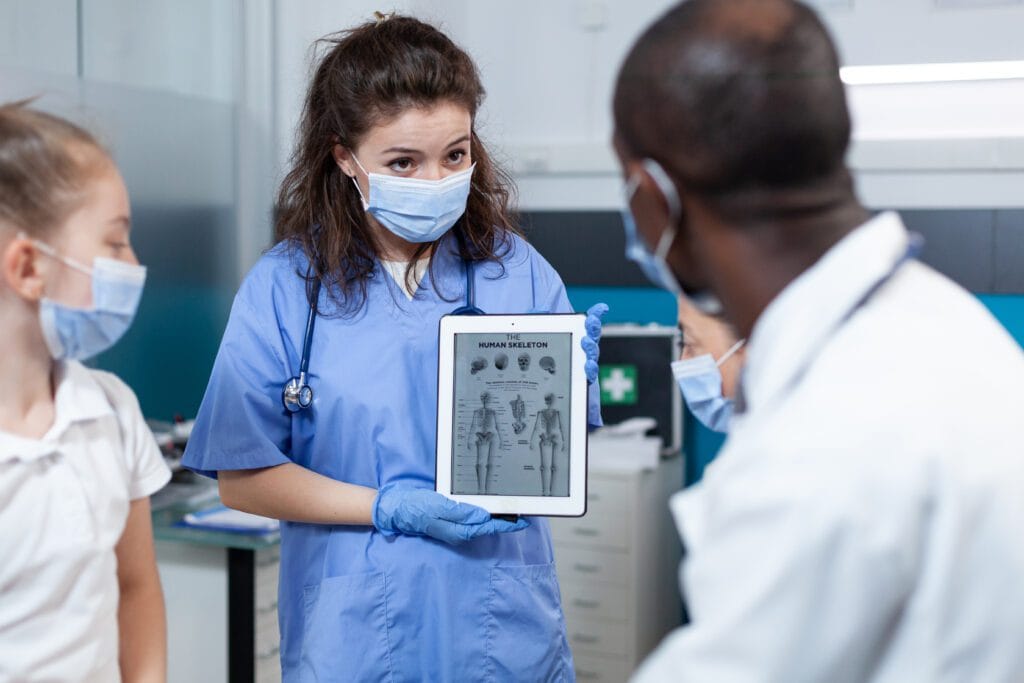The Role of Remote Staff in Handling Post-Surgery Follow-Ups
Life after surgery is not just about healing a wound it’s about building confidence, regaining strength, and making sure the patient never feels alone in the process. Yet, post-surgery care is where many gaps show up. Missed follow-ups, forgotten medications, and confusing paperwork often leave both patients and providers stressed. This is where remote staff in post-surgery follow-ups step in as a real game-changer. With the right team, clinics and hospitals can make recovery smoother, safer, and more reassuring. Whether it’s through virtual medical assistant services, healthcare virtual assistant support, or a virtual assistant for medical practice, patients get the care they deserve even outside the hospital walls.
At Remote Medical Assistant, we make this vision practical by providing services like appointment scheduling, insurance support, and EMR management. These offerings are tailored to help both providers and patients breathe easier during the recovery phase. In this blog, let’s explore the 10 outstanding roles that remote staff play in making post-surgery follow-ups not just effective, but truly patient-centered.

1. Coordinating Post-Discharge Instructions
One of the trickiest parts of recovery is the moment a patient leaves the hospital. Discharge papers are often packed with medical terms, schedules, and care routines that can overwhelm patients and their families. Remote staff simplify this process.
-
They review instructions with patients in plain language.
-
They clarify doubts in real-time, saving countless phone calls to doctors.
-
They bridge communication gaps, ensuring patients never feel left on their own.
Think of them as a supportive guide who turns complex care notes into everyday actions. Without this, many patients risk misunderstanding vital instructions, which can delay healing. Even small clarifications here can make the difference between a smooth recovery and a stressful setback.
2. Tracking Medication Adherence
A big reason for hospital readmissions is missed or incorrect medication use. Here’s where remote staff show their real value. They create structured routines for patients, using gentle reminders through calls, texts, or emails. They don’t just track if a pill was taken; they notice patterns. If a patient is constantly late with doses, remote staff raise an alert before things get worse. Unlike a rushed clinic check-up, they can take the time to ask, Why are you skipping your meds? Is it side effects, cost, or simply forgetting?
This hands-on approach is exactly what makes a virtual medial office assistant so vital to keeping recovery safe and steady. It turns medication from a confusing chore into a manageable, everyday habit.
3. Scheduling and Managing Follow-Up Appointments
Follow-up visits are the backbone of post-surgery recovery. Yet, many patients forget or avoid them because they can’t keep up with the schedule. Remote staff solve this challenge by:
-
Coordinating calendars for both providers and patients.
-
Sending reminders ahead of time.
-
Handling rescheduling smoothly when life gets in the way.
They act as a steady anchor between the medical team and the patient’s routine. When supported by a virtual assistant for healthcare, clinics don’t lose valuable time chasing down no-shows, and patients don’t risk complications from missed check-ups. This consistency makes the recovery journey much less stressful for everyone involved.
4. Monitoring Patient Recovery Progress
Healing is never a straight line. Some patients bounce back quickly, while others face bumps along the way. Remote staff play a key role here by regularly checking in on pain levels, mobility, sleep quality, and even mental well-being.
By collecting these updates, they can spot early signs of trouble like swelling, fever, or worsening pain and alert doctors promptly. This proactive care often prevents small issues from spiraling into emergencies. Here, a virtual medical administrative assistant becomes more than just support; they are the eyes and ears of providers outside the clinic walls. It’s like having a watchful companion who ensures nothing slips through the cracks.
5. Assisting with Wound Care Guidance
Wound care can be intimidating for patients and caregivers. Bandages, cleaning routines, and infection risks often lead to confusion. Remote staff make wound care more manageable by:
-
Giving step-by-step guidance through telehealth platforms.
-
Sharing reminders about dressing changes.
-
Encouraging patients to send pictures for quick assessments.
By taking away uncertainty, they reduce the risk of infections and ensure patients stick to their care plan. This is one area where the virtual assistant in healthcare shines, blending professional oversight with day-to-day support. Patients feel reassured knowing someone is watching over their healing process closely.
6. Handling Insurance and Billing Queries
Let’s be honest: medical bills and insurance paperwork can feel like a second surgery. Patients fresh out of the hospital are already vulnerable, and endless forms can make the process worse.
Remote staff reduce this stress by helping patients:
-
Understand their coverage.
-
File claims correctly.
-
Resolve billing errors without frustration.
With a medical virtual assistant services setup, patients spend less time on hold with insurance companies and more time focusing on their healing. This not only saves time but also gives families peace of mind during a sensitive period.
7. Collecting and Managing Patient Feedback
Good healthcare always listens. After surgery, patients have plenty to share about care quality, communication, and recovery support. Remote staff step in to gather this feedback in a structured way.
They design quick surveys, reach out personally, and organize responses for providers to review. This process doesn’t just improve care; it shows patients their voices matter. And when powered by healthcare virtual assistant services, feedback loops become easier, more consistent, and truly actionable. By analyzing this feedback, staff can spot trends, address concerns quickly, and even suggest small changes that make a big difference in patient satisfaction. It also helps providers feel confident that their patients are being heard and supported every step of the way. Over time, this continuous feedback helps providers adapt and grow.
8. Coordinating Lab Results and Reports
Test results can bring either relief or stress. The worst part is waiting too long to hear back. Remote staff fix this delay by keeping tabs on labs, chasing results, and updating patients promptly. They also make sure reports are shared directly with doctors, closing the loop quickly. This way, patients never feel left in the dark about their health. With the support of a virtual health care assistant, the entire process becomes more transparent and less stressful. Quicker access to results means quicker treatment decisions, and that can often make all the difference in recovery.
Beyond just delivering results, remote staff also explain next steps clearly, helping patients understand what those reports actually mean. That extra clarity eases anxiety and keeps patients from feeling lost in medical jargon. It’s not just about speed it’s about making the entire experience feel smoother, more human, and reassuring.
9. Offering Emotional Support and Reassurance
Recovery is as much emotional as it is physical. Anxiety, frustration, and even depression often show up when patients feel isolated after surgery. Remote staff don’t replace therapists, but they provide a listening ear and constant reassurance.
By checking in warmly and encouraging patients to share their struggles, they create trust. The presence of virtual health assistants helps patients feel less like “cases” and more like human beings going through a tough journey. Sometimes, even a short conversation can lift a patient’s spirits and build confidence. They also celebrate small milestones with patients, like completing a week of consistent medication or improving mobility, which reinforces positivity. Additionally, these assistants can share coping tips, relaxation techniques, or helpful resources, making the recovery process feel more manageable and supported. Patients often feel a stronger connection to their care team simply because someone genuinely checks in on them regularly.
10. Strengthening Communication Between Providers and Patients
At the heart of post-surgery care lies communication. Remote staff ensure patients don’t just receive instructions but also truly understand them. They become a reliable point of contact, making sure nothing gets lost between doctors, nurses, and families.
By reducing miscommunication, they also save providers from repeated clarifications. Clinics using a virtual administrative medical assistant notice fewer errors and smoother coordination across the board. Better communication means faster care, stronger trust, and fewer mistakes.
The Value of Remote Staff in Post-Surgery Follow-Ups
When a patient leaves the hospital, recovery doesn’t stop—it just shifts to a new setting. This is where remote staff become incredibly valuable. They pull all the little pieces together, from scheduling visits to checking on medications, so patients never feel left on their own. Because they’re consistently present, they can spot small concerns before they grow into bigger issues.
That extra layer of care not only prevents unnecessary readmissions but also gives families peace of mind, knowing there’s always someone keeping track of the details. They also act as a continuous link between patients and providers, ensuring questions are answered promptly and any early warning signs are immediately reported. By tracking progress, coordinating care, and offering reassurance, remote staff make recovery feel organized rather than overwhelming. Patients feel more confident, supported, and motivated to follow their care plan, which ultimately improves outcomes. This combination of oversight, communication, and personal attention is what makes remote staff such an essential part of modern post-surgery care.
It’s the kind of steady, behind-the-scenes support that transforms a potentially stressful recovery into a smoother, safer, and more reassuring journey for both patients and their families.
Why Healthcare Needs Remote Staff in Post-Surgery Follow-Ups
Hospitals and clinics are busier than ever, and on-site teams can only stretch so far. Remote staff fill that gap in a way that’s both practical and personal. They handle follow-up calls, reminders, and updates that might otherwise slip through the cracks, while also giving patients a familiar voice to lean on during recovery. This consistent support helps patients feel cared for, even when doctors or nurses aren’t immediately available.
For providers, remote staff reduce administrative burdens, allowing doctors and nurses to focus on hands-on care and critical decisions rather than chasing missed appointments or unanswered calls. Patients, in turn, experience smoother communication, timely updates, and a stronger sense of connection with their care team. They don’t have to wonder if their questions will be answered or if their progress is being monitored they know someone is there to guide them through every step of recovery.
Additionally, healthcare organizations benefit from cost-effective coverage, extended reach, and improved efficiency without needing to expand on-site teams. Remote staff can help track recovery trends, coordinate with multiple departments, and ensure continuity of care all while reducing stress for both staff and patients. Ultimately, this approach strengthens trust, enhances outcomes, and creates a recovery experience that feels personal, reliable, and truly supportive.
Conclusion:
Post-surgery follow-ups are more than just checkboxes on a form. They are lifelines that guide patients back to health, step by step. Without the right support, recovery can feel like climbing a mountain alone but with remote staff, every hurdle becomes manageable. They make sure patients feel seen, heard, and supported, turning what can be a stressful and confusing time into a smoother, calmer journey. From coordinating instructions to tracking medications, scheduling visits, and easing emotional worries, remote staff redefine what true patient-centered care looks like. They don’t just handle tasks they deliver peace of mind, reassurance, and a constant connection that patients and families can rely on. Even small gestures, like a friendly check-in call or a timely reminder, can make a huge difference in how confident and motivated a patient feels during recovery.
For providers, this support brings consistency and efficiency that strengthens the entire healthcare system. By taking care of routine follow-ups and communication, remote staff free up doctors and nurses to focus on the most critical aspects of care. The result is not just better outcomes, but also happier, more confident patients and a less stressed medical team.
Ultimately, the role of remote staff in recovery isn’t optional anymore it’s essential. They are the quiet, steady partners in every patient’s journey, ensuring no one has to navigate post-surgery recovery alone. With their help, healthcare becomes more compassionate, more connected, and truly patient-focused.
Frequently Asked Questions
Q1: How do remote healthcare staff support patients after surgery?
Remote staff help by checking in regularly, reminding patients about medications or follow-up visits, and offering guidance when recovery feels confusing. They act as a bridge between the patient and the doctor’s office.
Q2: Can virtual staff reduce hospital readmissions?
Yes. By monitoring recovery closely and addressing small concerns early, they help prevent complications that could lead to another hospital visit.
Q3: What tasks do they usually handle during recovery?
They take care of scheduling appointments, tracking symptoms, coordinating with providers, updating medical records, and offering general support for both patients and families.
Q4: Are patients comfortable working with remote staff?
Most patients appreciate having someone to call or message without needing to travel back to the clinic. The convenience and consistency often improve satisfaction with care.
Q5: Do healthcare providers benefit from remote staff too?
Absolutely. Doctors and nurses get more time for hands-on care, while administrative and routine follow-up tasks are handled smoothly in the background.
Ready to Simplify Post-Surgery Follow-Ups?
If your clinic or hospital wants smoother, safer, and more compassionate follow-ups, now is the time to act. Remote staff in post-surgery follow-ups can transform patient recovery and provider efficiency.
At Remote Medical Assistant, we specialize in giving healthcare teams the extra hands they need. From insurance support to appointment scheduling to patient follow-up care, our services are designed to make life easier for both providers and patients.




